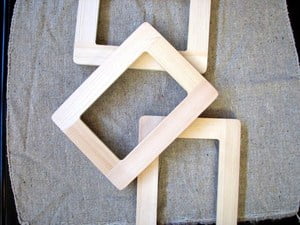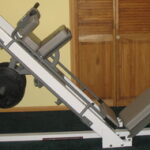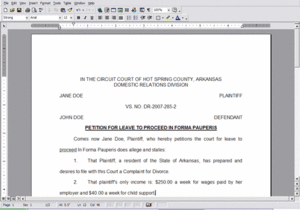When building any type of table, proportioning the legs may be a dilemma. It is vital to have a table leg thick enough to hold the table yet not look too heavy or chunky at the floor. The answer to this dilemma is tapering the table leg.
Four types of machines work well for this project. The band saw may be used to cut the lines plotted on the leg. Follow the line exactly to achieve an even look. Smoothing the edge may be done with a hand plane or jointer.
If you do not have a band saw, tapered leg cuts may be done by using a table saw, router table or jointer. These tools may seem odd choices because normally they are used for straight and parallel cuts.
Wood grain should be as straight as possible to the length of the leg. Buying four similar boards will help give symmetry and uniformity to the legs.
Most tapered legs are done on two sides. These are the simplest cuts. There are times a three or four-sided taper may be desired. The marking and cutting process is the same.
Begin drawing the taper on the face of the leg. Make sure to mark the bottom of the apron line using masking tape. The apron line is where the table leg begins to show after it has been connected to the table. Do not taper the top of the leg. Begin the taper ¼ inch below the apron line. Use a soft lead pencil to make the line. (Pen or marker is hard to sand out of the finished piece.) Mark the desired width at the bottom. Connect the two marks using a straight edge if using a band saw. If using a table saw, jointer or router table, the only mark needs to be on the face that will be tapered.
Before beginning the tapers, make sure to cut the leg joinery. With the band saw, begin cutting at the bottom of the leg. As you get to the top the blade may jump. Either hold a scrap piece of lumber by the top of the cut to hold the blade in place or smooth the roughness after cutting.
A jig is used to taper on a table saw. Construct the jib to be as long as the table leg. Put a spacer on one end to get the desired angle. The jib is placed against the rip fence with taper or angle towards the saw blade. When cutting, begin on the apron side so the angle begins cutting at the apron line.
When using a router table, the set-up should be for jointing. Begin by placing the foot of the table leg against the starter block. Push the leg forward to make a complete pass over the running bit. Make as many passes as required for the desired taper.
Using a jointer to taper 5/8 inch or less is recommended. Begin by placing the top of the leg (by the apron line) on the out-feed table. Very minimal wood will be removed. As the leg is fed forward, more depth will be removed, with the final depth being cut at the end.
The process in tapering legs is slightly different with each tool. Experiment with the tools you have available and become comfortable with the tapering process. Practice makes perfect.



